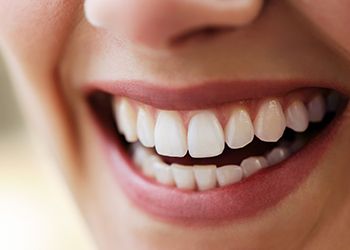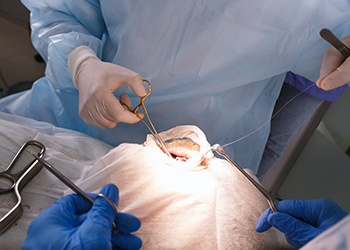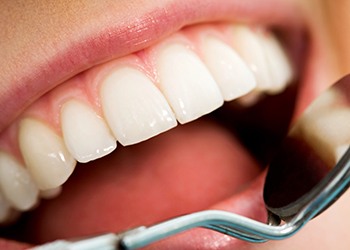Repair Gums with Soft Tissue Grafting
 Gum recession can occur over time for a number of reasons – advanced periodontal disease, habitual teeth grinding, trauma to the gum tissue, and overly aggressive brushing, to name a few. This condition is likely to lead to unpleasant symptoms over time, such as painful sensitivity to temperature and increased risk of decay.
Gum recession can occur over time for a number of reasons – advanced periodontal disease, habitual teeth grinding, trauma to the gum tissue, and overly aggressive brushing, to name a few. This condition is likely to lead to unpleasant symptoms over time, such as painful sensitivity to temperature and increased risk of decay.
Thankfully, highly-trained periodontist Dr. Davis offers gum/soft tissue grafting as an effective method for rebuilding gum tissue in needed areas. Contact Adirondack Periodontists in Plattsburgh, NY today if you’d like to learn more, or if you’re interested in scheduling an appointment.
How Does Gum Grafting Work?

Our team will create a small incision along the gum line around the teeth where recession is occurring, and the donor tissue will be gently inserted into the site and sutured in place. This tissue will either come from another area of the patient’s mouth/body or a tissue bank, depending on their personal circumstances and needs. The healing process will likely require around six weeks, although every patient is different.
There are three major types of soft tissue grafts:
- Connective Tissue Graft – This is the most common method of gum grafting. A flap of skin will be cut at the roof of the mouth, and Dr. Davis will harvest connective tissue from underneath it. This tissue is then stitched to the gum tissue and used to cover any exposed tooth roots.
- Free Gingival Graft – Tissue material will be taken directly from the roof of the mouth and attached to the treatment area. Dr. Davis will typically recommend this service if the patient’s gum tissue simply needs to be thickened in certain spots throughout the mouth.
- Pedicle Graft – During this procedure, Dr. Davis will take tissue from around or near the specific tooth/teeth that need repair. After cutting the flap (also known as a pedicle) partially while leaving one edge attached, we will readjust the tissue so that it covers the exposed tooth root(s) and sew it into its new position. This type of graft will only work if the patient still has a large amount of tissue structure in the treatment area.
What are the Benefits of Gum Grafting?

- If periodontal disease has destroyed healthy soft tissue, this type of procedure can halt the loss of bone and teeth, as well as protect the roots from any further complications and discomfort.
- Significant gum recession can cause a patient’s smile to appear overly “toothy” or uneven. By rebuilding the gum structure, we can elevate aesthetics.
- Chronic tooth root exposure can lead to severely painful sensitivity regarding hot or cold foods. Following gum grafting, the patient can expect greater oral comfort and stability.

 Exclusively Periodontics & Procedures in Implant Dentistry
Exclusively Periodontics & Procedures in Implant Dentistry